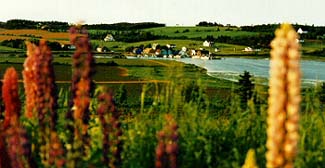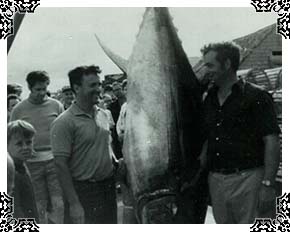









 Islanders
will often remark that you cannot stand on any spot of
land here that is farther than twenty minutes from the
sea. If you cannot always see a sheet of blue between the
hills, you certainly will always feel the ocean breeze,
which softens a summer day or carries a chill off the
spring ice floes. The sea is an inescapable and
ever-present fact of life on Prince Edward Island. It not
only stakes out the borders of our province, but also
influences every aspect of who we are and how we think
about ourselves. The rhythms of the Island way of life
are inseparable from the rhythm of the sea.
Islanders
will often remark that you cannot stand on any spot of
land here that is farther than twenty minutes from the
sea. If you cannot always see a sheet of blue between the
hills, you certainly will always feel the ocean breeze,
which softens a summer day or carries a chill off the
spring ice floes. The sea is an inescapable and
ever-present fact of life on Prince Edward Island. It not
only stakes out the borders of our province, but also
influences every aspect of who we are and how we think
about ourselves. The rhythms of the Island way of life
are inseparable from the rhythm of the sea.
![]()
Our history has been shaped by the ocean, as the early settlers arrived on ships and continued to rely on them as their only link to the outside world. In the nineteenth century, the shipbuilding industry actually fuelled much of our settlement. The golden age of the shipyards attracted magnates and manual labourers alike to Island soil. But in addition to launching its share of ships, P.E.I. shores also saw the demise of many others. Between 1792 and 1887, there were thirteen wrecks outside of New London Harbour alone. Tales of shipwrecks-- such as those of 'The Annabella' and 'The Marco Polo'-- have become the stuff of local legend, passed down for generations. The building of lighthouses was one measure taken to ensure as few wrecks happened as possible, and white towers soon were perching on red capes all around the coast. As well as providing a beacon for wayward seamen, they also provided jobs for hundreds of men as lighthouse keepers.
Shipbuilding | Lighthouses | 'The Annabella' | 'The Marco Polo'
![]()
 Countless Islanders
have relied on the bounty of the ocean for their
livelihood, whether they were pulling the nets themselves
or working in the lobster canneries. The fishery began
for reasons of survival, as early settlers relied on the
abundance of seafood to carry them through lean years.
However, in the nineteenth century, Islanders
increasingly engaged in fishing as a way of making a
living. The rich stocks of groundfish (such as herring,
mackerel, and cod) and shellfish (such as oysters and
mussels) in the waters of the Gulf of St. Lawrence soon
gave rise to a profitable and diversified industry.
Undoubtedly, the lobster has become the symbol-- and
biggest moneymaker-- of the Island fishery. But the life
of a fisherman has not been without its dangers and
uncertainties. In the early years, fishermen brought in
their catches in small boats and risked losing their
lives to the ravages of the sea. More recently, the
greatest threat has become that of diminishing stocks--
and the possible closing down of an entire way of life.
Countless Islanders
have relied on the bounty of the ocean for their
livelihood, whether they were pulling the nets themselves
or working in the lobster canneries. The fishery began
for reasons of survival, as early settlers relied on the
abundance of seafood to carry them through lean years.
However, in the nineteenth century, Islanders
increasingly engaged in fishing as a way of making a
living. The rich stocks of groundfish (such as herring,
mackerel, and cod) and shellfish (such as oysters and
mussels) in the waters of the Gulf of St. Lawrence soon
gave rise to a profitable and diversified industry.
Undoubtedly, the lobster has become the symbol-- and
biggest moneymaker-- of the Island fishery. But the life
of a fisherman has not been without its dangers and
uncertainties. In the early years, fishermen brought in
their catches in small boats and risked losing their
lives to the ravages of the sea. More recently, the
greatest threat has become that of diminishing stocks--
and the possible closing down of an entire way of life.